How to start a food garden on your balcony
You don’t need a big garden to grow your own food. Our very own Khanya Mzongwana has created an incredible food garden on the balcony of her flat. She often shares images of her bounty on Instagram, resulting in many people begging her to show them how she does it. She listened and delivered! She shares her top tips for starting your own food garden.
Growing food has become such a major part of my ethos. And living in small spaces has shaped the way I think about growing food – my late father had an enormous amount of space in his backyard eZwide, Gqeberha, and he was a masterful plant dad. I couldn’t believe how well this man grew food. And remember, this was before you could learn how to do things on the internet. He grew everything. He had a wild bush teeming with yellow and red cherry tomatoes, lettuces in shapes and colours I’d never seen before, he had a garden bed dedicated to alliums, a few rows of broccoli, cauliflower, red peppers (which we all know are horribly overpriced at supermarkets) strawberries, one solitary pineapple, brinjals and even a lemon tree. The list is endless.
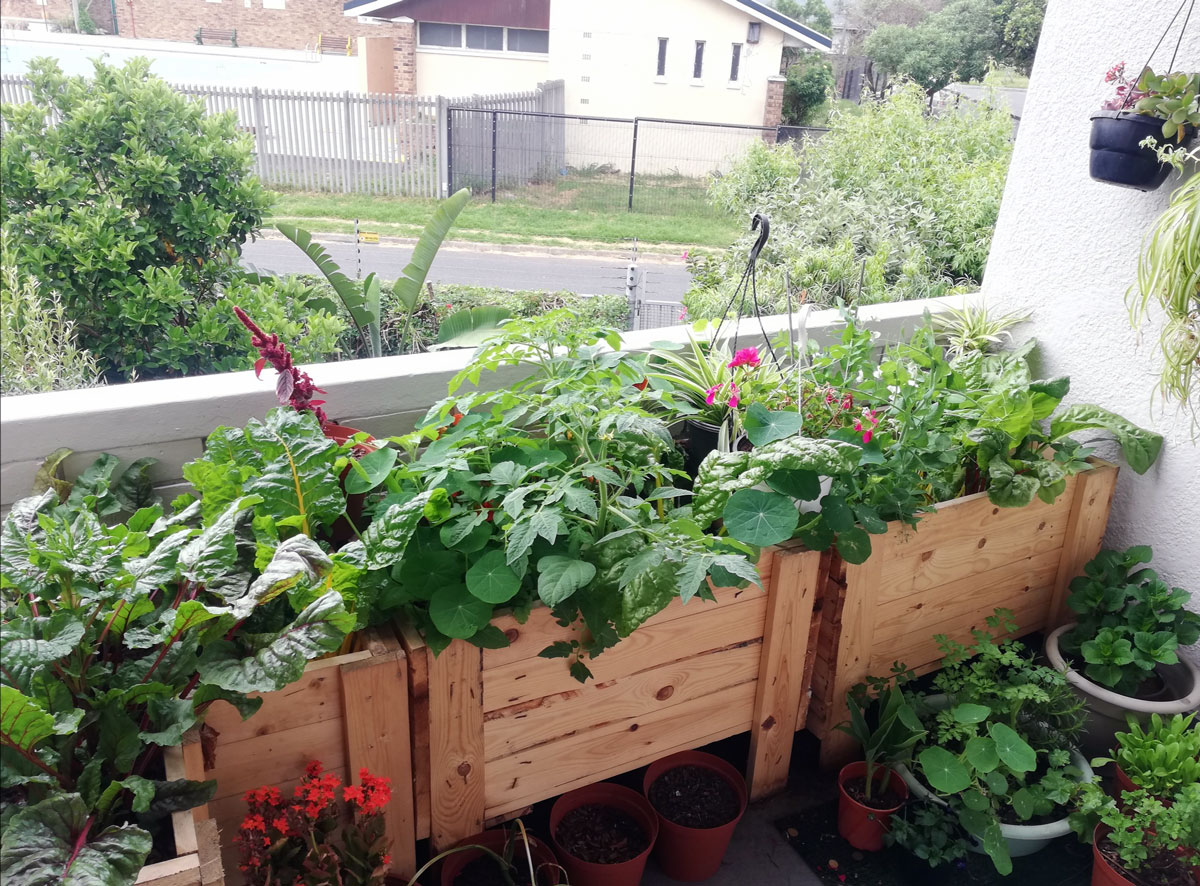
When my mom and I opened our restaurant, The Aztec Kitchen, in 2012, my dad would supply us with the most gorgeous produce I had ever seen. Every week, he would bring us a box of fresh veggies and enormous bags of herbs we would use to make pestos, dressings and oils. For free! Bless his heart. Years later, when I started my mom’s food garden at her townhouse in Charlo, I drew on my dad’s ability to intuitively know what his plants needed. I also had the challenge of figuring out how to grow as large a variety of food as he did on the small patch I had. I was tasked with figuring out how to create an entire ecosystem where there was once nothing more than a lawn. I would learn the art of making the most of the small space I’d been handed, to create something of a micro farm.
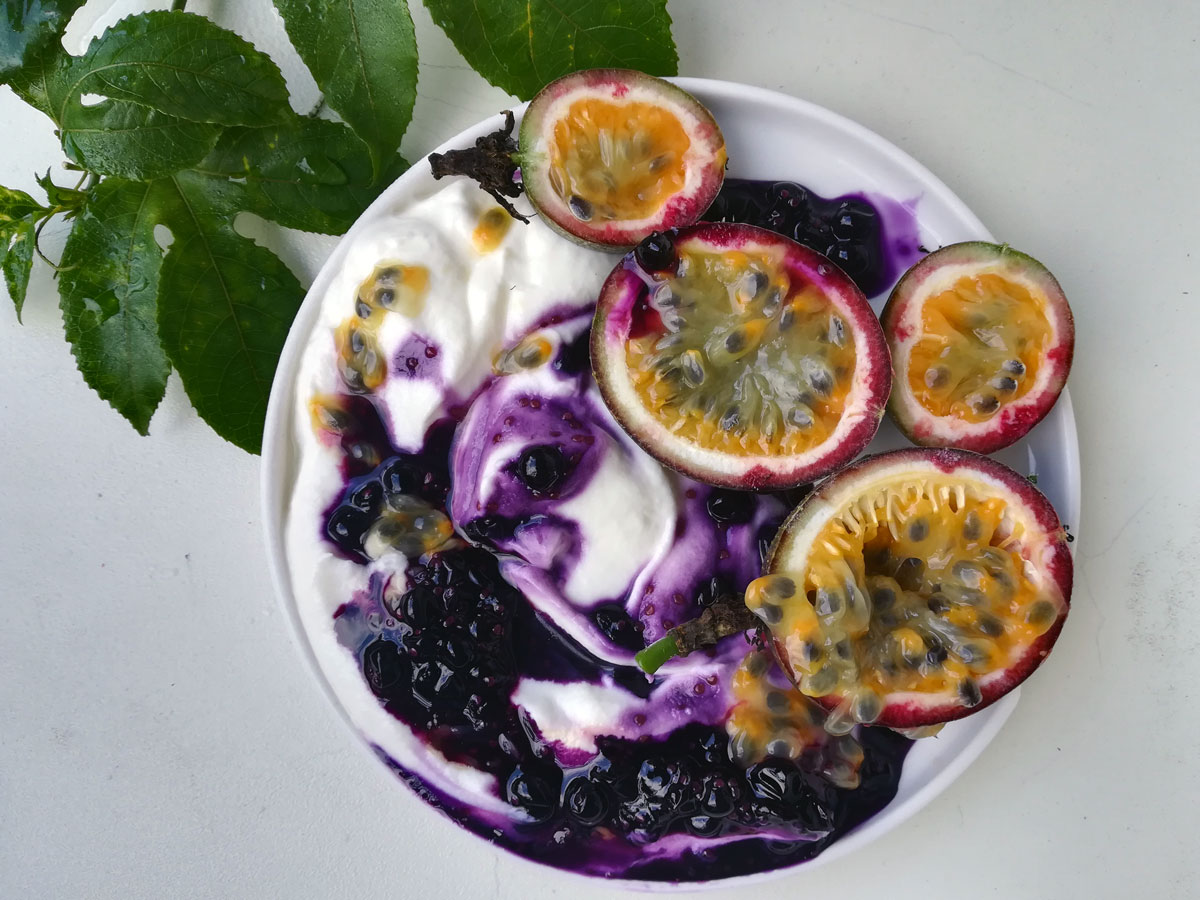
This idea is by no means a hot take – I’ve drawn so much inspiration from seeing incredible small food gardens in apartment spaces all over the world, and when it was time for me to move to my new home in Cape Town in March 2021, I found that the balcony was way smaller than it looked on Property 24! But I didn’t care, I’d inherited all the stubbornness, determination and resourcefulness I needed to turn this small space into a thriving garden that can feed more than just me. My hope is to inspire other flat-dwellers to grow their own delicious fresh produce sustainably, and not feel limited by their surroundings or intimidated by the prospect of tending to crops.
I’m interested in growing all kinds of things: root vegetables, brassica and alliums, fruit and flowers. I’ve tested the limits of a tiny space before and unlocked my own potential as a grower. I have learned to listen to my plants and know what they need based on the way the leaves bounce, the way their stems spindle and how big the blossoms bloom. I discovered single-stemming a tomato plant long before I understood the terminology. My goal is to turn my balcony here at home into a sanctuary for bees, butterflies and birds, to help clean the air around me and to manage the amount of produce I buy.
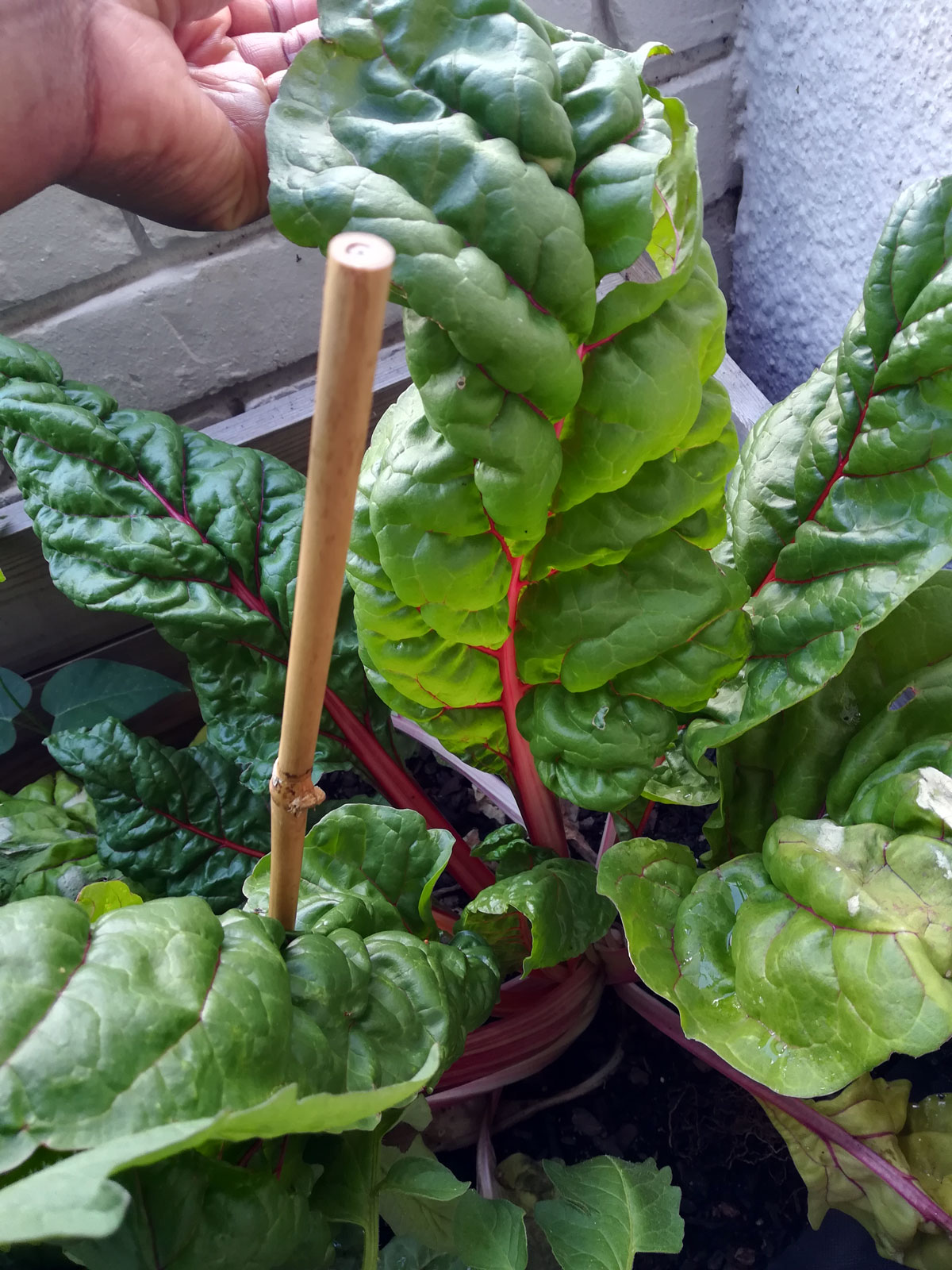
I imagine the possibility of a movable garden – one you can pack up and take to your new space, if you have to move. A potted garden that looks and feels permanent and rooted, but is not limited to one space. One of my greatest manifestations has been planting a garden wherever I go, and this feels like the easiest and most effective way to do it. My goal is to challenge people’s perceptions of a garden and of what they, in their seemingly small capacity, can do and to realise our collective potential to build a greener, cleaner, world and help save the planet by centring vegetables and fruit in our diets. And, most importantly, instilling an understanding of what it takes to produce something as seemingly simple as a tomato, fostering an appreciation and respect for farmers and for ingredients. Knowledge is power, and understanding just how time-consuming and labour intensive it really is to get a single asparagus stem on your plate (2–3 years for first official harvest!) .
Growing food is how I honour my dad and keep his legacy alive. He passed down his intuitive nature and love for plants to me and I will always cherish him for it. My mission is to help spread the word about the magic of creating and caring for a garden and to put the power back into people’s hands about what they eat.
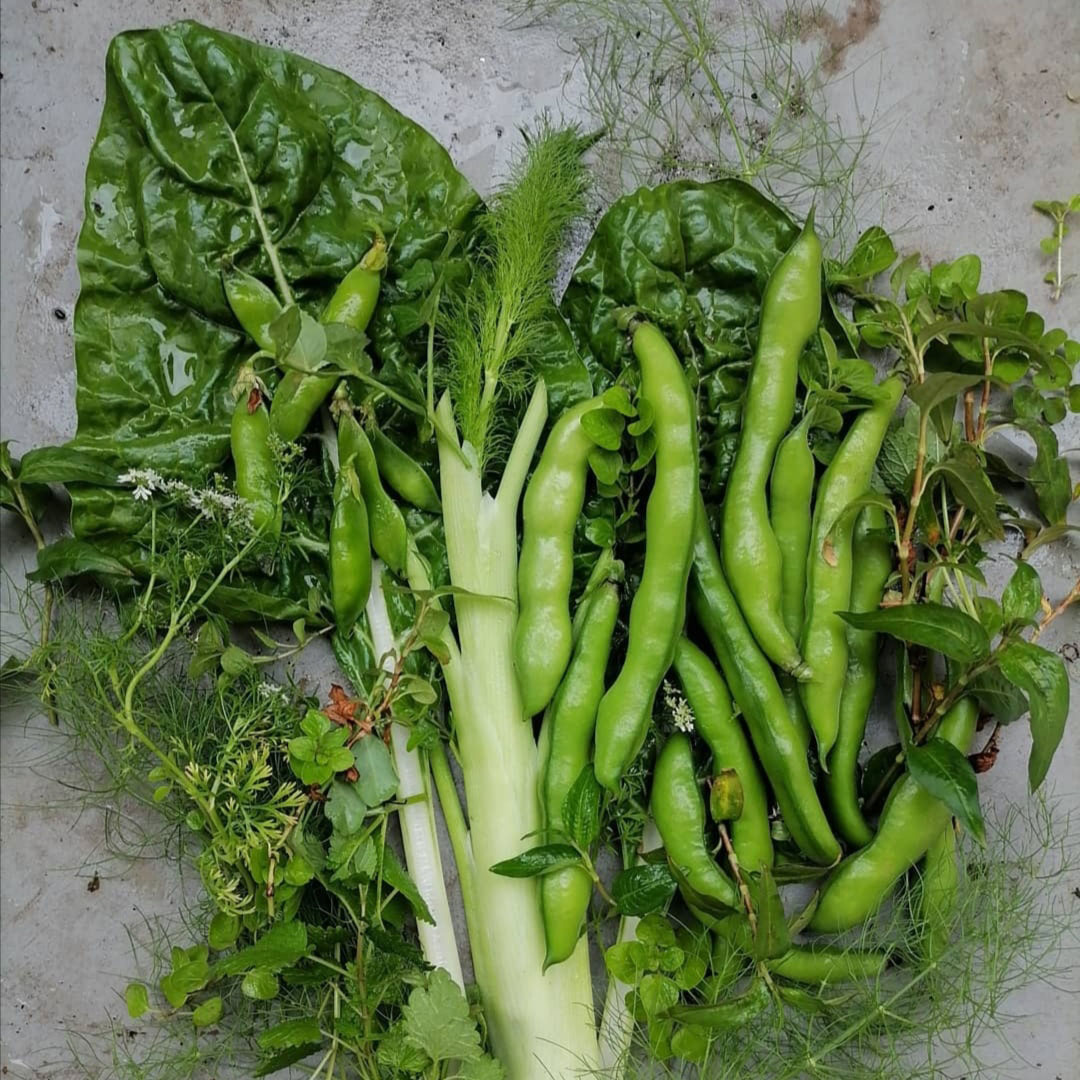
13 tips for growing your food garden
Now, it’s time for you to start your garden. Your farm in your flat, if you will. You’ll need a couple of things before you start. Here are some helpful first steps:
1. Measure your space
This step can’t be skipped if you want to build raised beds, which I highly recommend. Growing your food in this fashion will ensure that you can easily move house with your garden when the day inevitably comes. I got a friend to help me build boxes using wooden palettes. Measure your boxes so you can line them with landscape fabric, which you can get at any garden shop. When you measure out your space, don’t forget to leave space for your door to easily open and close – this seems obvious, but it’s so easy to get excited and forget!
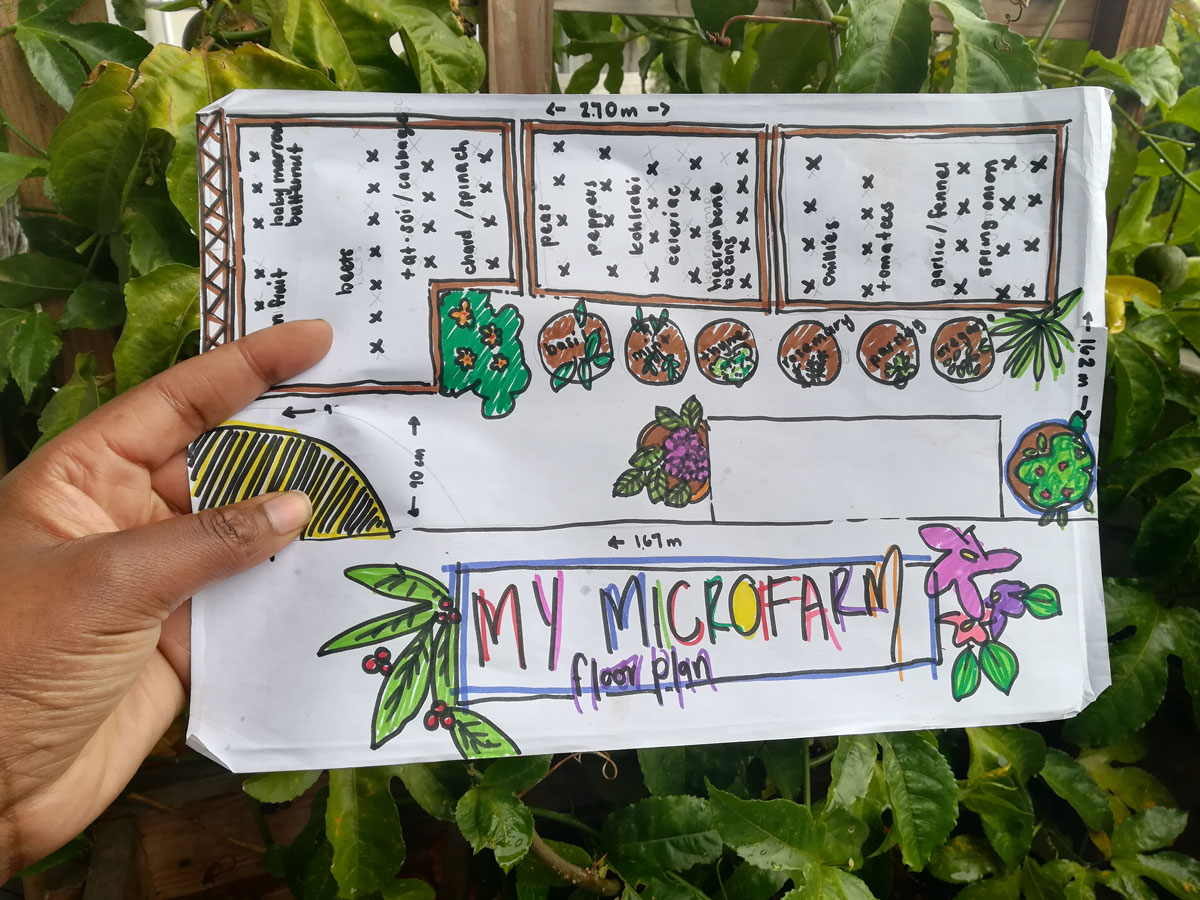
2. Make a wooden trellis for climbing plants
Make a wooden trellis if you want to grow climbing plants like cucumbers and granadillas. These are ideal for small spaces and harvesting them on your balcony feels incredibly rewarding. You can also buy a wire trellis from a garden shop and use a wall as a support, although I recommend the wooden one – it looks better and plants will have more surface area to wrap around and climb.
3. Clean and prep your space
Clean your space thoroughly to prepare for the arrival of your plant boxes. You can add Astroturf to the floor of your balcony to protect it.
4. Time to go shopping!
You’ll need to get a mixture of potting soil, compost and, as one Uber driver-slash-farmer once advised me, manure. All of this needs to be enough to fill your plant boxes. The manure advice kind of changed my life, TBH. I did 50% potting soil, 25% compost and 25% manure. I also topped my beds with mulch – any kind is okay. Mulch is anything from pieces of tree bark to rooibos tea leaves. You’ll mulch once you’ve planted your seeds or seedlings. Did you know that compost is available at some Woolies stores? Find out if your local Woolworths stocks it.
5. Get the tools
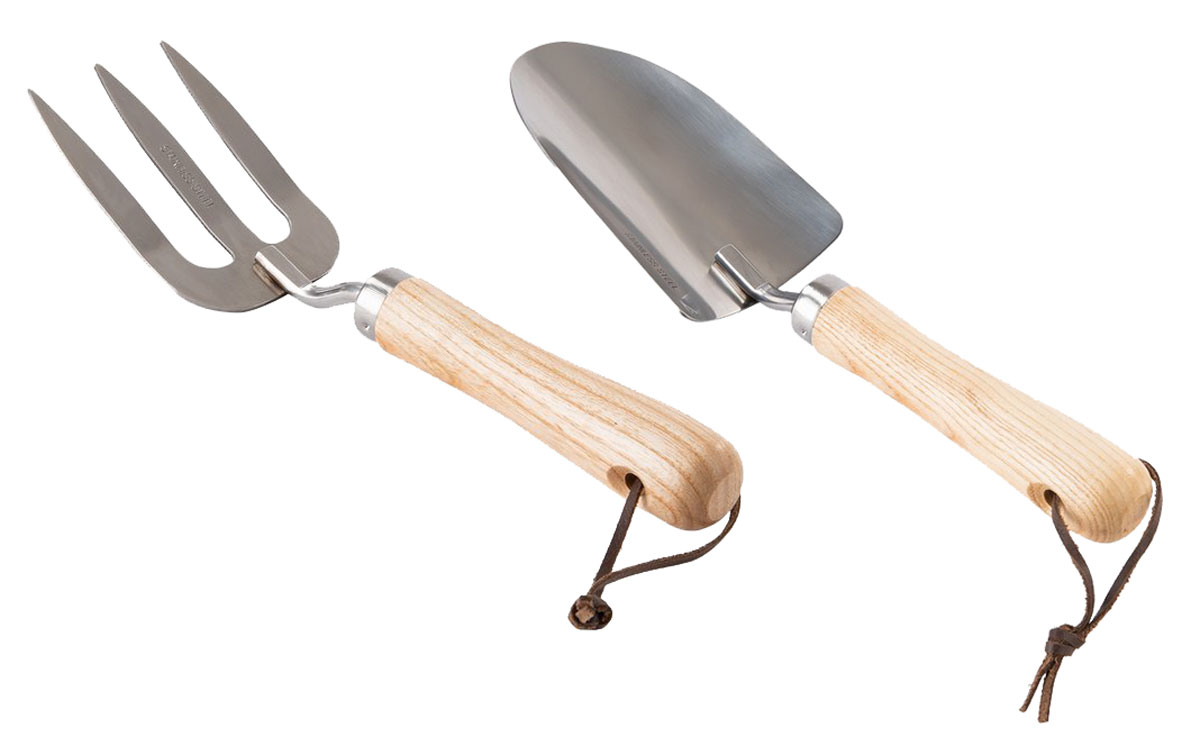
Next, you’ll require some tools to get the job done right. A garden fork and spade is pretty much all you’ll really need to get started. Find these adorable ones at selected Woolworths stores.
Shop the garden fork here.
Shop the garden spade here.
6. Seeds or plants?
Now, figure out what kind of gardener you are. Are you a "from seed" person, or do you prefer your seeds to arrive already hatched? Contrary to what the average garden snob might tell you, seedlings are fine. Especially if you’re growing food in a small area. They’re convenient and faster – seedlings will save you about two weeks' waiting time, which is a win in my books. In seeds’ defence, though, it is rather rewarding to have grown everything from scratch.
7. Think about light
Does your balcony get a lot of sun during the day? If it does, choose plants that do well in full sun. If you have a well-shaded space, find plants that don’t require a whole lot of sun and that can thrive in the shade.
8. Choose what you’d like to grow
What are the foods you like to cook and eat the most? What are you most likely to eat? Make a list of your favourite vegetables, and grow those. Just remember your space limitations and try to grow space-saving vegetables and fruit: corn and tomatoes are great because they are the skyscrapers of the crop world. They grow upwards, which is ideal for a garden with limited space. If you are growing tomatoes, remember that they will eventually need to be supported by stakes. Try to make your garden as diverse as you have the space for – I like to grow companion plants together. Companion plants are plants that have a symbiotic relationship and grow well together as a community of sorts. When plants that support each other’s growth are planted together, they can boost the fertility of the soil, potentially attracting better pollinators, thus increasing yields.
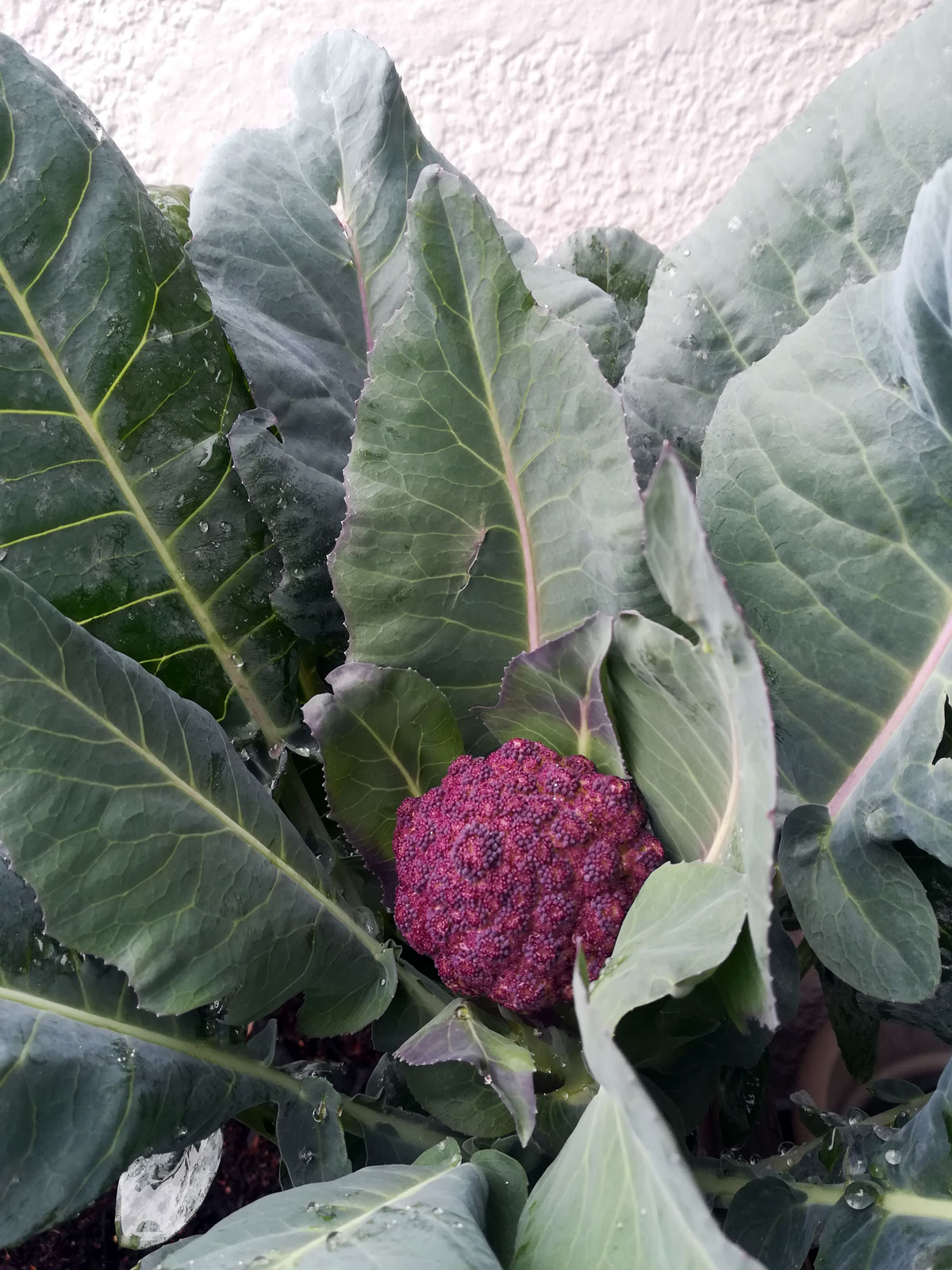
Examples of companion plants are: tomatoes and basil, which are companions in the kitchen, too. The pungent aroma of basil repels insects and increases yields. Corn, climbing beans and squash are often grown together; this is one of the earliest examples of companion planting and this combination of vegetables is called The Three Sisters. The corn grows tall, acting as a support for the beans, while the large leaves of the squash provide shade on the ground, which keeps the soil moist for longer, thus saving water! Nasturtiums are a caterpillar's best friend, and will keep them from eating the cabbages, broccoli and kale you’ve painstakingly grown. Plus, the brightly coloured flowers attract pollinators, which will ultimately increase your yields. Aphids cripple a plant’s growth, and if there’s one thing that aphids hate, it’s garlic. The pungent smell of garlic helps keep the aphids at bay, increasing your chances of a successful harvest. Beans, peas and other legumes increase the nitrogen levels in the soil, which all plants need.
9. Remember to grow seasonally for the best results
I recommend growing perennial vegetables and fruit; these are fruits and vegetables that produce all year. Examples of these are potatoes, spinach, artichokes, peppers, cucumbers, sweet potatoes, rhubarb and kale. Vegetables that thrive in winter weather include broccoli, cauliflower, cabbage, carrots, garlic, broad beans (a personal favourite), beetroot, radishes and leeks. Summer vegetables and fruit include tomatoes, onions, celery, corn, peppers and brinjals.
10. If you like to cook with herbs, grow them in pots
Woolies has a great selection of delicious herb plants that are great for beginners. Remove them from their temporary cardboard homes, gently separate them at the root and plant them in a rich mixture of potting soil and compost. Keep the soil moist, taking care not to over-water them, which is a common mistake for novice gardeners.
11. Find a suitable organic fertilizer
There are many great ones on the market, but I personally recommend Woolworths' universal plant food, which has long ensured the health and longevity of my plants.
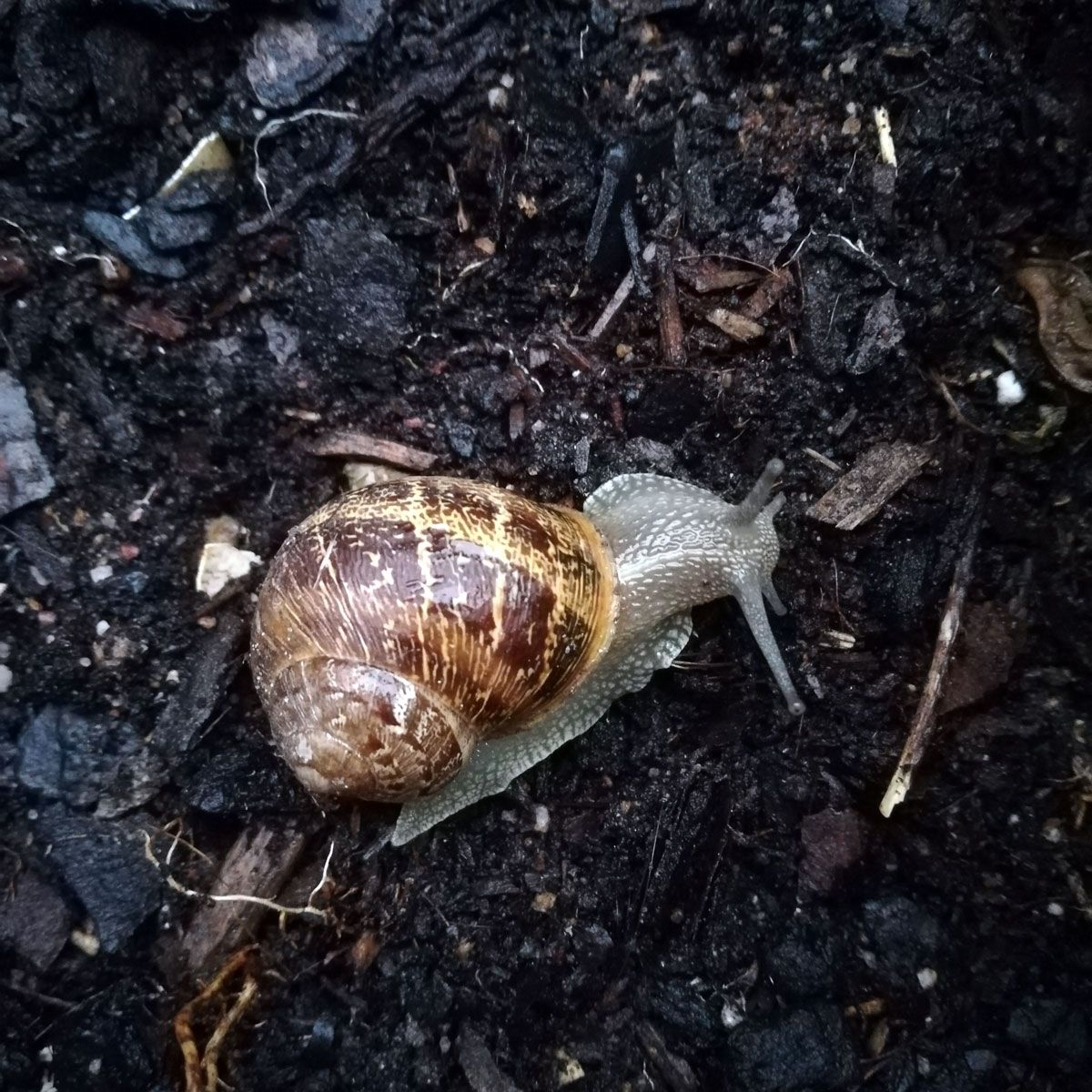
Shop Woolworths Universal Plant Food here.
12. Make your garden a beautiful place to be!
Hang up pots of flowers to attract bees and butterflies. If you have a bit of space for a small table or bench, add them and turn your garden into a sanctuary you can hang out in. Add pots of succulents like spekboom and ice plant; these require little care and look beautiful, too. Plus, they’re edible!
13 Be patient!
Creating an ecosystem is a long game and requires a certain amount of faith. Gardening is like any relationship; it’s butterflies and excitement at first, then you eventually settle into the routine of taking care of the garden and watching it grow. It takes dedication and great care to yield favourable results. Things don’t always go according to plan – sometimes you’ll dote on a crop and do all you can to ensure its health and it just won’t yield. Do not give up. Seasons aren’t the same – there will be quiet times, and there will be times where your soil needs nourishment. Nurture and love your new garden, be that crazy person who talks to your plants and look closely at them to scan for pests. Remember to keep your expectations realistic, too. Not everything that is planted will grow as expected, and that’s okay!
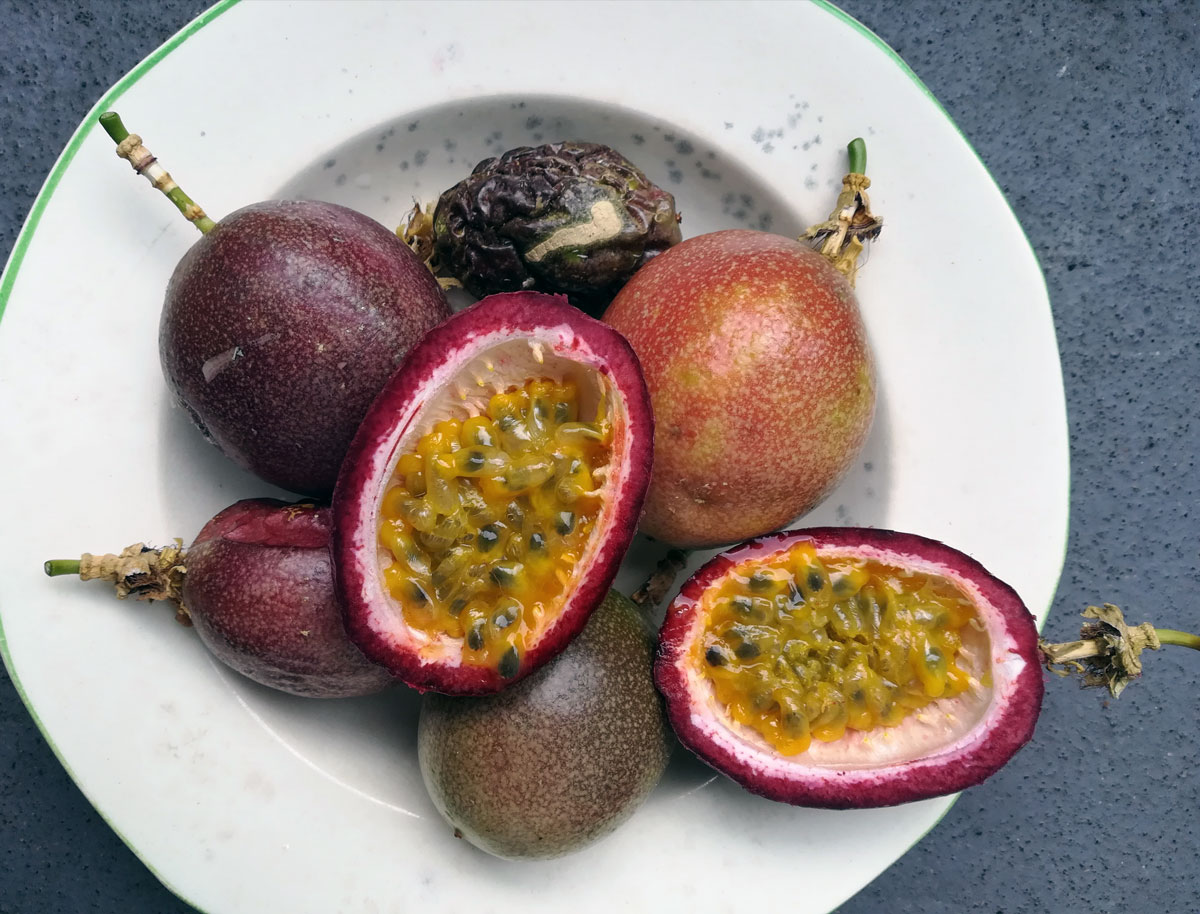

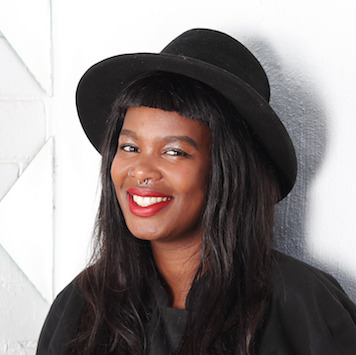

Comments